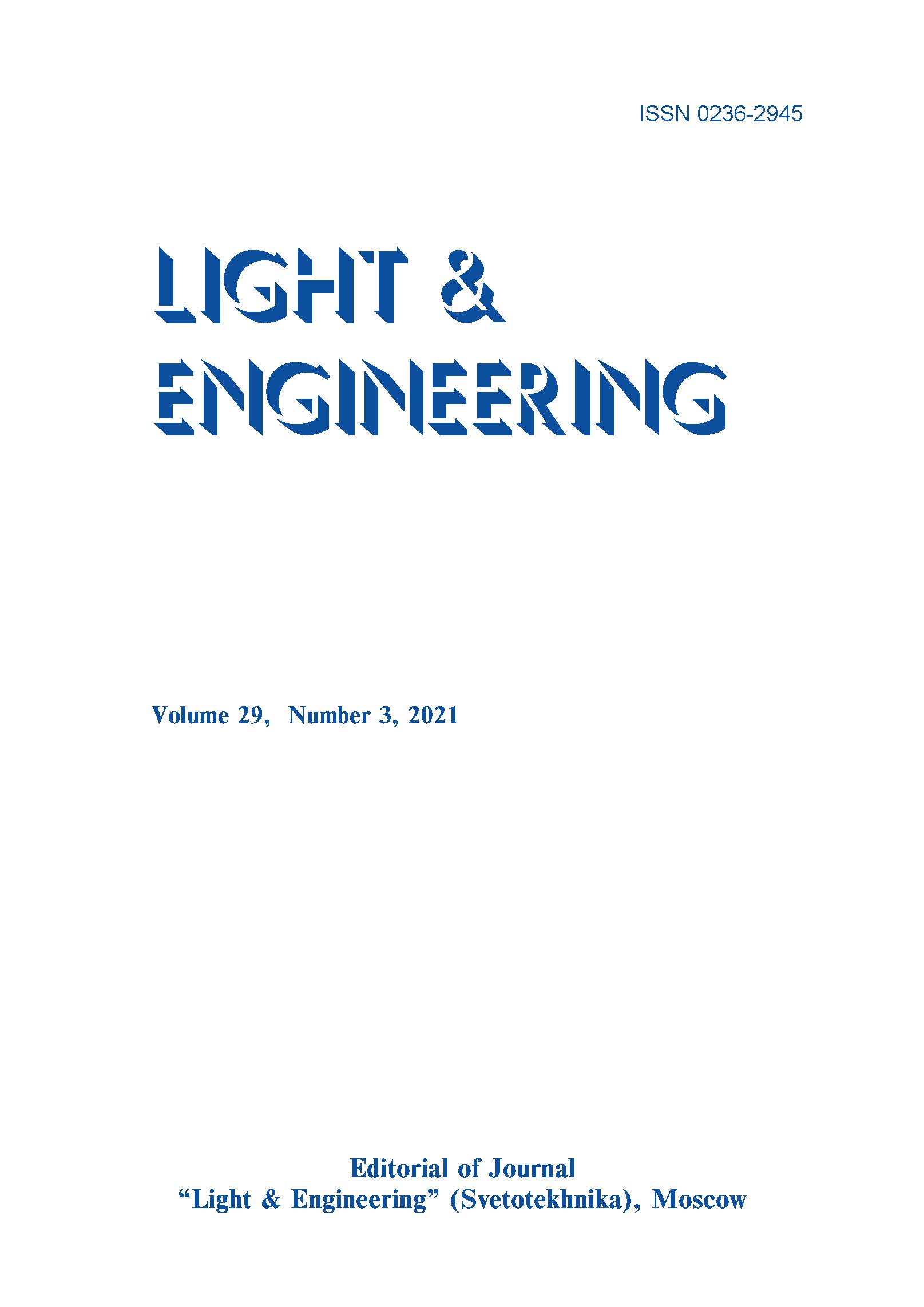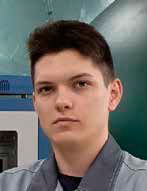Content

Abstract:
To date, a lot of methods have been developed for calculating correlated colour temperature (CCT). There are both numerical solutions (Robertson’s method, Yoshi Ohno method, binary search algorithm) and analytical (Javier Hernandez-Andres’s method, McCamy’s method). At the same time, the information about their accuracy is of a segmental fragmentary nature, therefore, it is very difficult to develop recommendations for the application of methods for certain radiators. In this connection, it seems extremely interesting to compare the error of the most well-known CCT calculating methods, using a single universal approach. The paper proposes an algorithm for researching the error of the methods for calculating correlated colour temperature, based on the method for plotting lines of constant CCT of a given length. Temperatures corresponding to these lines are taken as true, and the chromaticity lying on them are used as input data for the researched method. The paper proposes an approach when first the distribution of the error in the entire range of determination of CCT is determined, followed by bilinear interpolation for the required chromaticity. Using this approach, the absolute errors of the following methods for calculating CCT: McCamy, Javier Hernandez, Robertson, and Yoshi Ohno were estimated. The error was estimated in the range occupied by quadrangles of possible values from ANSI C78.377 chromaticity standard, developed by American National Standards Institute for LED lamps for indoor lightning. The tabular and graphical distribution of the absolute error for each investigated method was presented in the range of (2000–7000) K. In addition, to clarify the applicability of the methods for calculating CCT of the sky, the calculation of the distribution of the relative error up to 100000 K was performed. The results of the study can be useful for developers of standards and measurement procedures and for software developers of measuring equipment.
References:
1. ANSI C78.377 Electric Lamps – Specifications for the chromaticity of solid-state lighting products. Rosslyn: American National Standards Institute, 2015, 26 p. 2. Bahvalov N.S., Zhidkov N.P., Kobelkov G.M. Numerical methods: a textbook for students of physical and mathematical specialties of higher educational institutions / Moscow: BINOM. Lab. of knowledge, 2012, 636 p. 3. CIE015:2004 Colorimetry, 3rd Edition / CIE TC1–48, 2004, 82 p. 4. GOST R54350–2015. Lighting fittings. Light requirements and test methods: national standard of the Russian Federation: Lighting fittings / GOST R54350–2015. Moscow: Standartinform, 2015, 41 p. 5. Hernández-Andrés J., Lee R.L., Romero J. Calculating correlated colour temperatures across the entire gamut of daylight and skylight chromaticities // Applied optics, 1999, Vol. 38, # 27, pp. 5703–5709. 6. Kelly K.L. Lines of Constant Correlated Colour Temperature Based on MacAdam’s (u, v) Uniform Chromaticity Transformation of the CIE Diagram // Journal Of The Optical Society Of America, 1963, Vol. 53, # 8, pp. 999–1002. 7. Krystek M. An algorithm to calculate correlated color temperature // Colour Research & Application, 1985, Vol. 10, pp. 38–40. 8. McCamy C.S. Correlated colour temperature as an explicit function of chromaticity coordinates // Color Research & Application, 1992, Vol. 17, # 2, pp. 142–144. 9. Ohno Y. Practical Use and Calculation of CCT and Duv // LEUKOS, 2014, Vol. 10, # 1, pp. 47–55. 10. Prytkov S.V. A new calculation table for determining the correlated colour temperature using the Robertson method // Problems and prospects of development of domestic lighting, electrical engineering and Power engineering: materials of the XII All-Russian Scientific and Technical Conference with International Participation in the framework of the III All-Russian Lighting Forum / eds. O.E. Zheleznikova, A.A. Ashryatov, A.M. Kokinov. – Saransk: Afanasiev V.S., 2015. – P. 196–202. 11. Prytkov S.V. On the calculation of lines of constant correlated colour temperature// Problems and prospects of development of domestic lighting, electrical engineering and power engineering: materials of the XII All-Russian Scientific and Technical Conference with International Participation in the framework of the III All-Russian Lighting Forum / eds. O.E. Zheleznikova, A.A. Ashryatov, A.M. Kokinov. –Saransk: Afanasiev V.S., 2015, pp. 191–196. 12. Robertson A.R. Computation of Correlated Color Temperature and Distribution Temperature // J. Opt. Soc. Am.,1968, Vol. 58., # 11, pp. 1528–1535. 13. Schanda J., Mészáros M., Czibula G. Calculating correlated colour temperature with a desktop programmable calculator // Color Research & Application, 1978, Vol. 3, pp. 65–69.
Keywords
- correlated colour temperature (CCT)
- black-body line
- line of constant CCT
- error of calculation method
- chromaticity coordinates
- McCamy’s method
- Javier Hernandez-Andres’s method
- Robertson’s method
- method of Yoshi Ohno
Recommended articles
Generalization and Research of the Keitz Equation Inaccuracy when Radiation Flux of Linear Low Pressure UV Lamps is Measuring L&E, Vol.30, No.1, 2022
Evaluation of Photobiological Efficiency of Spectrum–Combined LED Phyto-Irradiators in Photo-Culture Cucumber Growing L&E, Vol.30, No.3, 2022
To the Calculation of Dominant and Complementary Wavelengths and Purity L&E, Vol.30, No.3, 2022


